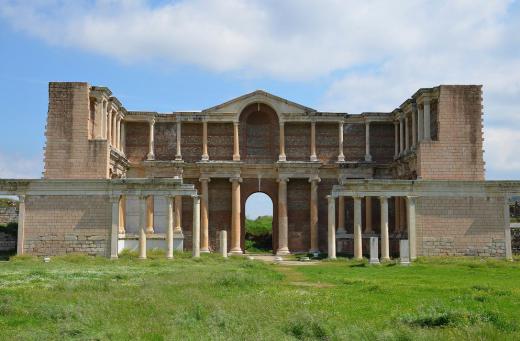Opus incertum was a masonry construction technique used by the ancient Romans. The style involves using small stones of varying shapes in the construction of walls or other architectural foundations, such as the masonry used to build bridges. It was mainly in use during the first and second centuries B.C. The term literally means "uncertain work," possibly referring to the irregular appearance of walls built using this technique.
Small, irregularly shaped pieces of stone — about 4 inches (about 100 millimeters) in diameter — were used for opus incertum. These stone pieces were set in a wall of concrete masonry. Occasionally, horizontal lines of bricks or tiles were laid in the walls as well. The stone walls were either not dressed or were only dressed on one side, leading to a rough, irregular appearance.

The earliest use of opus incertum was around 210 to 200 B.C. The technique largely died out during the first quarter of the first century but remained in use in some areas until the middle of the first century B.C. Around that time it was gradually replaced by opus reticulatum, a technique using a regular pattern of small, diamond-shaped stones. A style archaeologists call quasi-reticulum marks the transition period between the two styles.

Construction techniques commonly are used to date archeological finds since techniques such as opus incertum were only in use for a relatively short time. Probably the earliest known use of this technique is in the Forum Romanum, where it was used for restoration. Examples of opus incertum have been found throughout the portions of Italy occupied by the Romans. Walls built with this technique and dating between 200 and 150 B.C. have been found in many locations, including Pompeii, basilicas in town squares or public marketplaces, and various temples.
Marcus Vitruvius Pollio, who lived during the middle of the first century B.C., was an architect and engineer who described opus incertum in his multi-volume writing "De Architectura libre decem" — "Ten Books On Architecture". "De Architecura" is the only complete work on architecture that has survived from that time period. Vitruvius referred to opus incertum as the "old manner" of building walls, showing that it had been mostly replaced by opus reticulatum by that time. He claimed that opus reticulatum was more graceful in appearance, but weaker and more likely to crack than the older style of building.
